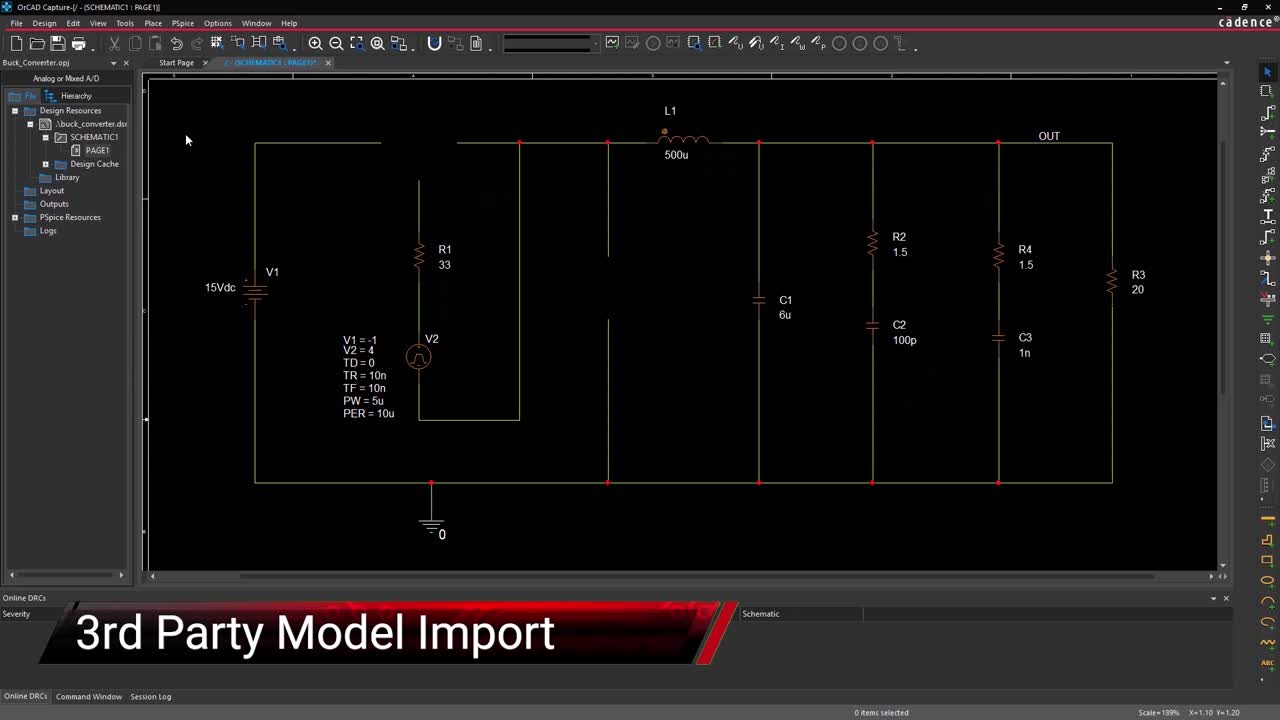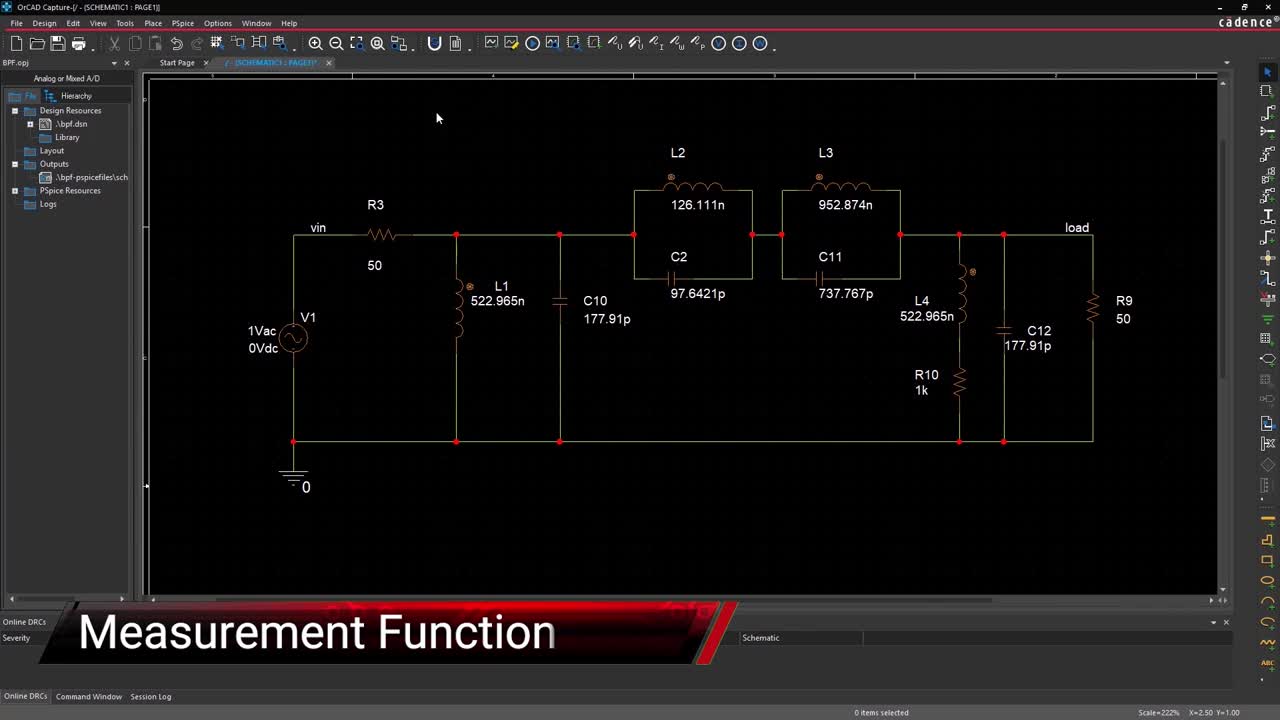Installation & Licensing
Yes, PSpice for TI solution is an exclusive version of PSpice analog/mixed signal simulator with OrCAD Capture available to TI customers at no cost. Click Here to download the software.
Yes, we do. PSpice for TI software is available free of charge to everyone including students and teachers. Click Here to download your free copy.
You should receive the download information within a few minutes once approved. In some cases, it may take 24 – 48 hours if you are requesting the license outside of US export laws.
Depending on your internet speed, the PSpice for TI installation might take just a few minutes to an hour. And once you initiate the installation process, there's no additional action you need to do until the installation process is finished. So, feel free to grab a coffee or continue your work while keeping the PSpice for TI installation running in the background. However, for the best experience, a high-speed Internet connection is recommended.
Absolutely. You can have the full version of PSpice and the PSpice for TI solution installed on your system at the same time.
You do not need to have internet access when running PSpice for TI software, but an internet connection is required to download and install the software updates.
You get access to the software for 1-year at a time. After one year, you can renew your license for an additional year.
Each copy of PSpice for TI that gets downloaded is locked to one system and one registered email address, so you cannot share the software with anyone else. We recommend that you encourage your colleagues to register and get their own personal free copy of PSpice for TI.
Yes, you are allowed to install PSpice for TI on up to three different systems with the same user ID.
Getting Started
We know that starting to use a new tool can be daunting at first, so we’ve created a video series to show you how simple it is to get your circuit simulations complete with the powerful capabilities of PSpice. Click Here to view the video series.
This series will walk you through the OrCAD & PSpice workspace, setting up & performing various types of simulation, PSpice waveform analysis capabilities and much more.
We are providing a full training on PSpice for TI solution for free. It uses hands on exercises focused on maximizing the performance of your circuits. Visit here to download the training material. The training content includes a Lab Manual and Design Files required for the training.
PSpice for TI Capabilities
Yes, PSpice for TI software allows users to import all available PSpice vendor IC models from web. It does not restrict you to use any specific vendor models in your design
Below is a video that explains the process of importing & using 3rd party models in your simulation with PSpice for TI.

Click Here to view more PSpice for TI tutorial videos.
No, you will need to recreate the design in OrCAD Capture and re-simulate with PSpice for TI.
Ability to seamlessly access entire TI model library and associated resources such as reference designs, datasheets, model details etc.
Users can simulate complex mixed signal designs using the curated TI component library without any design size limitations providing them a superior Design Entry and Simulation env. compared to any other IC vendor solution.
Seamless product and library update.
PSpice is considered as one of the most accurate mixed signal simulators in the market. It is widely used in Automotive, Power Supply and Internet of Things domain.
As most IC vendors deliver ready to use PSpice models in your simulation, PSpice for TI solution will allow 3rd party model import capability from all IC vendors. You will also get access to reference designs for all TI components within the tool itself along with test bench capabilities.
No, PSpice for TI package does not include PCB design capability. Contact our channel partner directly to get access to complete OrCAD PCB design & analysis solutions at: https://orcad.com/orcad
Once you open a reference design of a TI component, it downloads it locally using Internet. After that you can create as many test benches for simulation purposes in the offline mode and it does not require internet.
Yes, you can append one waveform over the other for two different scenarios and compare both the results in your simulations
Refer – Below is a video showing how you can overlay one waveform over the other in PSpice.

Click Here to view more PSpice for TI tutorial videos.
Currently, the magnetic modeling functionality is not included with the free version of PSpice for TI
Although, you can gain access to magnetic modelling capability by upgrading to a full license of PSpice. Contact our Channel Partner directly to get access to complete PSpice solution at: https://www.orcad.com/pspice
Refer - Here’s an application note that shows you how to build inductors with magnetic cores and how to plot the BH curve of a core in PSpice Probe window. You can do modelling of Magnetic Core from Datasheet in PSpice full version
PSpice simulator relies on iterative solution method of Newton Raphson to solve nonlinear circuit equations. When this iterative method is not able to obtain a stable solution, it is reported as a convergence error.
PSpice offers Auto Convergence mode, which tries to achieve convergence or solution by intelligently tweaking different simulator options.
Refer – Here’s a forum thread to understand various common causes of convergence and different simulator options available to you in PSpice to solve those convergence errors
For in depth explanation of various simulator options to deal with convergence issues, please refer to the PSpice User Guide
Yes, PSpice for TI supports mixed signal simulations. It provides digital worst-case timing analysis to help you find timing problems that occur with circuit signal transitions.
Mixed-signal designs can also be verified where the analog portions have digital content embedded. Integrated analog and event driven digital simulations mean improved speed without loss of accuracy, and complex measurements can be created and viewed as the simulation progresses.
Support
Yes, we have an active PSpice for TI User Community for you to connect and grow your network, get questions answered by our technical experts, discuss topics, and exchange ideas to help you grow in the electronic design world. Click Here to go to PSpice for TI forum.
If you can’t find the answer to your question in one of our forum articles here , feel free to make a new query and post it. Any active member will get back to you with an answer to your question.
If you need assistance support with TI models & or have any simulation related questions, reach the TI team here
General Questions
If you’re happy with the PSpice for TI experience and would like to continue using PSpice with all its advanced capabilities, simple click on the “upgrade” button from your Capture Start page to contact our channel partner to upgrade to a full PSpice product solution. Or you can contact your local channel partner and request a quote from here: https://www.orcad.com/pspice
Cadence Design Systems, Inc owns PSpice. In January 1998 MicroSim was acquired by OrCAD, which itself was subsequently purchased by Cadence Design Systems in July 1999.
A schematic diagram is a graphical representation of electronic circuits or systems connected together to convey the circuit’s function. The diagram displays important information such as, electronic symbols, part numbers, connections, component values and more.
PSpice for TI installation will come with OrCAD capture schematic application.
SPICE simulators are used for Integrated Circuits and board-level designs to check the integrity of circuit designs and to predict circuit behavior.
Unlike board-level designs composed of discrete parts, it is not practical to breadboard integrated circuits before manufacturing. Further, the high costs of photolithographic masks and other manufacturing prerequisites make it essential to design the circuit to be as close to perfect as possible before the integrated circuit is first built. Simulating the circuit with SPICE is the industry-standard way to verify circuit operation at the transistor level before committing to manufacturing an integrated circuit.
We recommend this video by a fellow YouTuber to understand the need for SPICE level simulations.
© 2024 Cadence Design Systems, Inc. All Rights Reserved.

